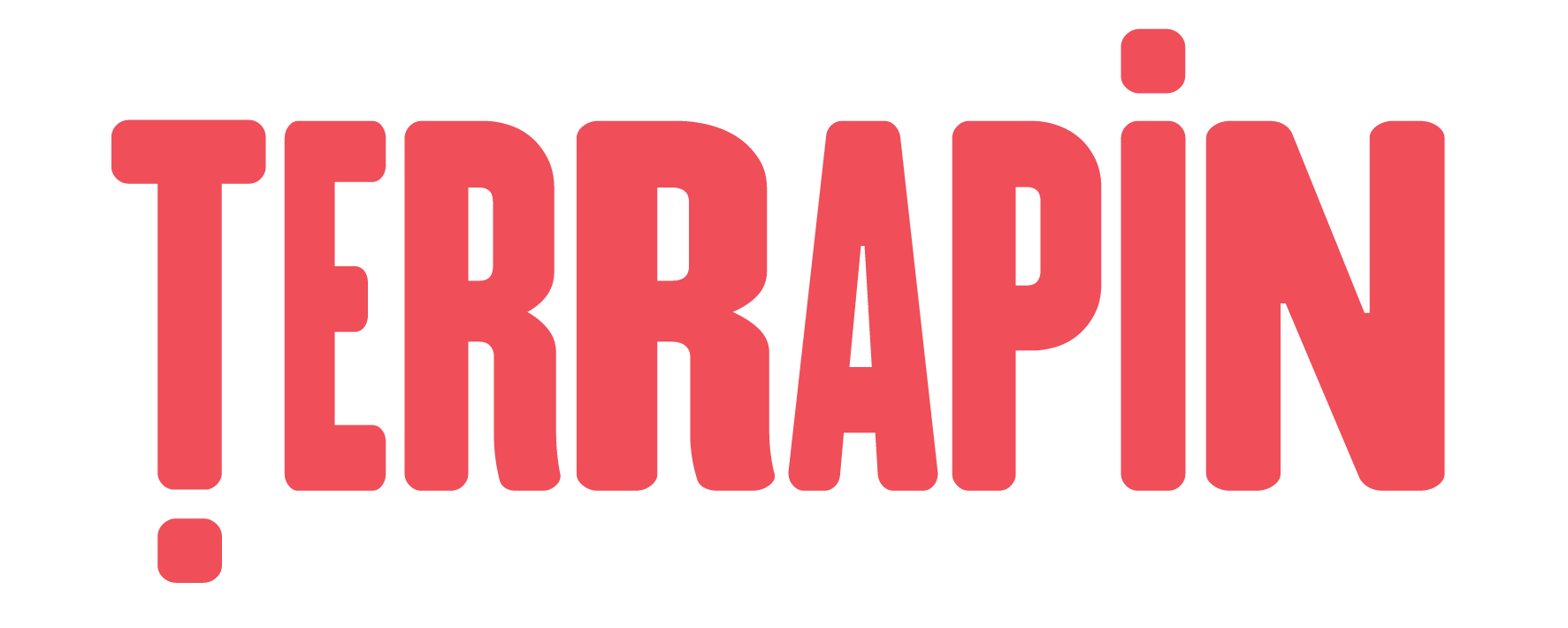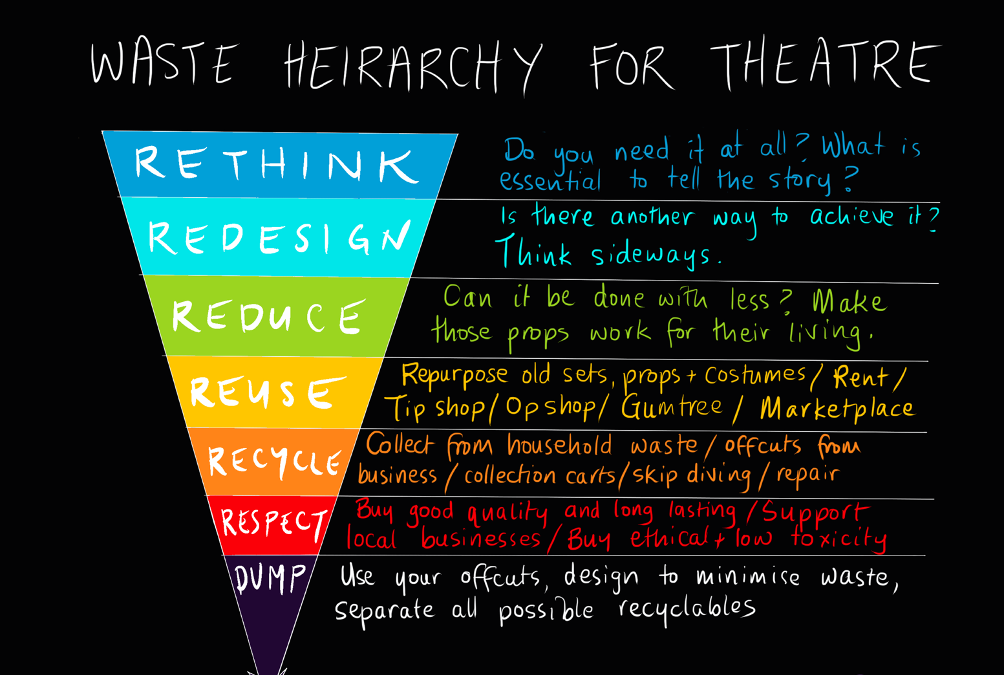Our early steps on a path to greater sustainability with designer/maker Bryony Anderson
I came out of the hills to join the Terrapin team after a couple of decades of working as a freelance puppet maker, committed to working with salvaged materials. That’s all very well when you’re working solo, but scaling the principle of resource shepherding up to company size has its complexities. Since becoming more involved in company operations I’ve also realised that the materials we use are only a fraction of our environmental impact.
Sustainability is a dog-eared word, and if it means being able to keep doing what you’ve been doing, then it’s not particularly useful either. Responding to the climate crisis means transforming what we do, and I’m thrilled that Terrapin is setting out on that journey.
To map out this path we’ve had to look first at our current operations, and that meant a deep-dive into the numbers. With the help of Sustainable Living Tasmania we now have a detailed snapshot of our emissions in the last year, which will inform some big decisions. International flights are a major carbon culprit, followed closely by freight. What’s known as Scope 3 Emissions, those you’re not directly emitting yourself but have a hand in causing, are a sobering consideration – audience travel to theatres outstrips the lot.
Next comes mitigation and reduction. Here at the Terrapin workshop we’re embedding resource responsibility into how we operate. We’re applying principles of low waste and low toxicity, working with salvaged and repurposed materials, and nutting out systems for collecting useful salvage without becoming a hoarder’s maze. Down the track, these principles will work their way upstream to flip how our designers think, so that materials are in conversation with design from the beginning. At the top is my rough-draft Waste Hierarchy for Theatre: any feedback welcome!
Meanwhile, Terrapin will be overhauling our vehicle fleet, and doing some beard-stroking about the environmental impact of touring and how to do it efficiently. We’ll be auditing our emissions annually, investing in ethical funds, choosing sustainable providers, and fostering local networks. Where we can’t eliminate or reduce emissions, we’ll offset them. On the strength of all that, we’ll be applying for Carbon Neutral certification with Climate Active, one of only a handful of arts organisations in the country to do so.
You could argue that the resources we save in the workshop are negligible in the scheme of things. But the power in it comes from amplification: the story is told in every school we visit. Terrapin’s emissions also don’t amount to much in the big picture – according to our audit, 2021’s emissions were equivalent to 34 cows! – but we can amplify our actions through influence with audiences, suppliers, partners, and government. Once our house is in order, we can start asking “What’s YOUR sustainability policy?”
How do you compare, say, cubic metres of CO2 from van exhaust to the number of imaginations fuelled in rural schools across Tasmania? The weighing up of unlike values is complex, which is why Terrapin is treating the move towards climate neutrality as a guiding light rather than a destination. As new information emerges, as technologies are developed and social terrain shifts, we will be making data driven and imaginative choices that take us ever closer: and perhaps, down the track, beyond net zero lies climate positivity and regeneration. The creative potential of that is utterly thrilling.
Read more about our new sustainability policy
Subscribe to our mailing list for more

